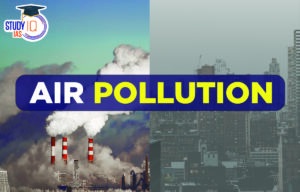Daily Current Affairs for UPSC 2023
Q) Which one of the following statements is not correct with reference to Supercritical carbon dioxide (CO2)?
- It is a fluid state of CO2, heated above its critical pressure.
- It is used for enhanced oil recovery from depleted oil reservoirs.
- When supercritical CO2 reacts with water, hydroxyl acid is formed.
- It can also be used for carbon dioxide sequestration.
Daily Current Affairs for UPSC – 17 April 2023
Explanation:
- Option (1) is correct: Supercritical carbon dioxide (CO2) is a fluid state of CO2 where it is heated and held at or above its critical temperature and pressure. In this supercritical phase, CO2 exhibits properties and behaviours between that of a liquid and a gas. In particular, supercritical CO2 possesses liquid-like densities with gas-like diffusivity, surface tension and viscosity.
- Option (2) and (4) is correct: Researchers at IIT-Madras have found that supercritical carbon dioxide can be a good agent for carbon dioxide sequestration and enhanced oil recovery (EOR) from depleted oil and gas reservoirs. It is used in the oil and gas industry for gas injections during enhanced oil recovery (EOR) techniques. Oil can typically remain in the reservoir during water flooding due to a lack of contact between the water and the oil.
- Option (3) is incorrect: However, CO2 gas injection techniques can have corrosive side effects. When supercritical CO2 reacts with water, carbonic acid (H2CO3) is formed. Carbonic acid lowers the pH in the reserve and creates an environment that is corrosive to metal equipment.
Q) Consider the following statements about the Ninth Schedule of the Indian Constitution:
- The Schedule contains a list of both central and state laws that cannot be challenged in court.
- Only the laws concerning agriculture and land issues are protected under this schedule.
- The laws placed under the Ninth Schedule were placed under judicial review in the Minerva Mills case.
Which of the statements given above is/are correct?
- 1 only
- 1 and 2 only
- 2 and 3 only
- 1, 2 and 3
Explanation:
- Statement 1 is correct: Ninth Schedule of the Indian Constitution contains a list of central and state laws which cannot be challenged in courts and was added by the Constitution (First Amendment) Act, 1951. The objective behind adding the Ninth schedule was to protect certain acts and regulations from being declared void on the ground that they violate the fundamental rights. It was created by the new Article 31B, which along with Article 31A was brought in by the government to protect laws related to agrarian reform and for abolishing the Zamindari system. While Article 31A extends protection to ‘classes’ of laws, Article 31B shields specific laws or enactments.
- Statement 2 is incorrect: The first Amendment added 13 laws to the 9th Subsequent amendments in various years have taken the number of protected laws to 284 currently. While most of the laws protected under the Schedule concern agriculture/land issues, the list includes other subjects.
- Statement 3 is incorrect: In I.R. Coelho case (2007), the Supreme Court ruled that laws placed under Ninth Schedule can be challenged on the ground of violating the basic structure of the Constitution. Laws placed under Ninth Schedule after April 24, 1973 shall be open to challenge in the court if they violated Fundamental Rights guaranteed under Article 14, 19 and 21.
Q) With reference to Heatwaves, consider the following statements:
- A heatwave is defined as the atmospheric conditions where the temperature deviation from the normal is greater than 4.5 degrees Celsius.
- Heat wave is considered if maximum temperature of a station reaches at least 35°C or more for Plains and at least 38°C or more for Hilly regions.
- The negative effects of heatwaves can be mitigated by reducing landfills in urban areas.
Which of the statements given above is/are correct?
- 1 and 2 only
- 1 and 3 only
- 2 and 3 only
- 1, 2 and 3
Explanation:
- Statement 1 is correct but statement 2 is incorrect: Heat waves are extreme events in which hot temperature in summer months persist for a relatively long period of time. In India, heatwaves typically occur between March and June, and in some rare cases even extend till July. Heat wave is considered if maximum temperature of a station reaches at least 40°C or more for Plains and at least 30°C or more for Hilly regions. When maximum temperature departure is 4.5°C or more from normal, Heat Wave may be described provided actual maximum temperature is 37°C or more.
- Statement 3 is correct: Between April and May 2022, around 350 million Indians were exposed to strong heat stress. Summer temperatures across districts in Punjab, Rajasthan, Haryana, Uttar Pradesh, and Bihar on an average rose by 0.5-0.9°C, between 1990 and 2019. It is estimated that maximum temperature will rise by 2-3.5°C in 100 districts and by 1.5– 2°C in around 455 districts, between 2021 and 2050. Landfills are responsible for emitting methane, which catches fires easily, thus reducing landfills can help mitigate heatwaves effects. These fires will exacerbate urban heat and weather variability.
Q) Consider the following statements about the Wholesale Price Index (WPI):
- Most of the weight in the calculation of WPI is allocated to the primary articles.
- Recently, WPI-based inflation declined to its lowest level in the last two years.
- It is released by the National Statistical Office of the Ministry of Statistics and Programme Implementation.
Which of the statements given above is/are correct?
- 1 and 2 only
- 2 only
- 1 and 3 only
- 1, 2 and 3
Explanation:
- Statements 1 and 3 are incorrect: Wholesale Price Index (WPI) measures the price of a representative basket of wholesale goods in India. The index is divided into three groups namely primary articles (22.6 per cent of total weight), fuel and power (13.2 per cent) and manufactured products (64.2 per cent). It is released by the Office of Economic Adviser, Ministry of Commerce and Industry. Base year of WPI is 2011-12. The purpose of calculating WPI is to monitor price movements that reflect supply and demand in industry, manufacturing and construction.
- Statement 2 is correct: India’s annual Wholesale Price Index (WPI)-based inflation declined to a 29-month low of 1.34 per cent in March 2023. WPI inflation data was 3.85 per cent in February, 4.73 per cent in January 2023, and 14.63 per cent in March 2022. The food index inflation eased to 2.32 per cent in March from 2.76 per cent in February. Deceleration in WPI comes in line with the easing of March retail inflation to 5.66 per cent.
Q) With reference to Mangrove pitta, consider the following statements:
- The mangrove pitta is a bird species endemic to India.
- It is listed as near threatened on the IUCN Red List.
- The first census of mangrove pitta was recently conducted all across India.
Which of the statements given above is/are correct?
- 1 and 2 only
- 1 and 3 only
- 2 only
- 2 and 3 only
Explanation:
- Statement 1 is incorrect: The mangrove pitta (Pitta megarhyncha) belongs to the family of pittas, the Pittidae. Mangrove pitta are colourful birds which have black head with brown crown, white throat, greenish upper parts, buff under-parts and reddish vent area. The mangrove pitta is a small mangrove bird, measuring 18 to 20 cm in length and weighing 90 to 120 grams. The mangrove pitta species is distributed in India, Bangladesh, Myanmar, Thailand, Malaysia, Singapore and Indonesia.
- Statement 2 is correct but statement 3 is incorrect: In the first-ever census of mangrove pitta birds carried out in two coastal districts of Odisha, 179 such birds were sighted. In India, mangrove pitta birds are found in a few pockets of eastern part, including Bhitarkanika in Odisha and the Sundarbans in West Bengal. The highest concentration of the birds has been found in the mangroves near the Mahipura river mouth inside the Bhitarkanika National Park. The natural ecosystems and habitats of these mangrove species include tropical and subtropical mangrove forests, tropical and subtropical wetlands, rivers, coastal marshlands, streams, creeks and estuaries. Mangrove pitta species are non-migratory resident birds. IUCN Status of mangrove pitta is ‘Near Threatened’.


 Air Pollution in India, Causes, Effects,...
Air Pollution in India, Causes, Effects,...
 Daily Quiz 03 April 2025
Daily Quiz 03 April 2025
 List of National Symbols of India with N...
List of National Symbols of India with N...





















